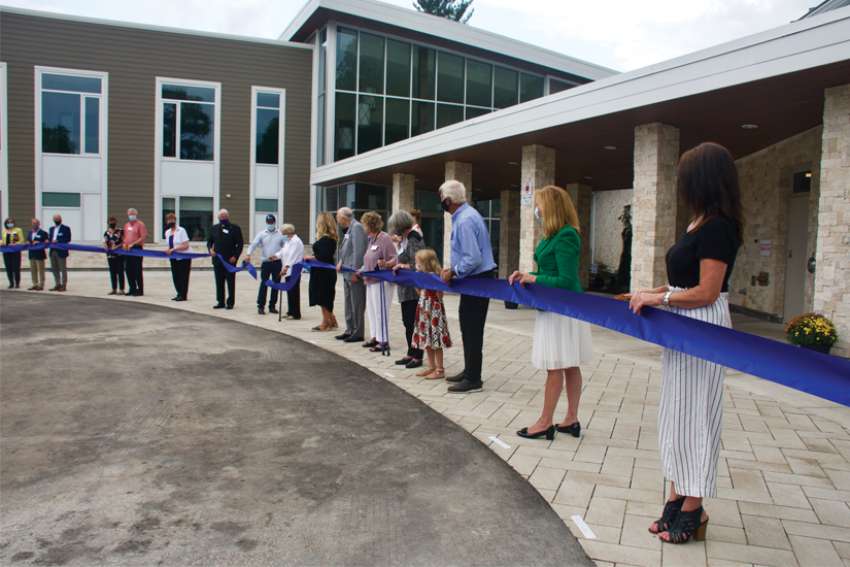Donors, dignitaries and community members in Dundas, Ont., were on hand Aug. 25 to christen Margaret’s Place Hospice, named in honour of Margaret Juravinski. She and her husband Charles, founder of the Flamboro Downs horse racing track, are long time philanthropic pillars in the Hamilton area whose name is also attached to the Juravinski Hospital and Juravinski Cancer Centre.
The hospice is the culmination of a $13-million fundraising campaign, branded the “Gift of Love Campaign” after honorary campaign chair Bishop Douglas Crosby in the early meetings said the gift of hospice is a gift of love, said David Silvestro, communications officer and spokesperson for the St. Joseph’s Villa Foundation.
The idea behind the hospice was sparked in 2016 when St. Joseph’s Villa Foundation sought to expand quality long-term and end-of-life care.
Don Davidson, the president and CEO of the foundation, expressed his gratitude to those in attendance for their significant contributions in making the dream a reality.
“Today was a day to celebrate our community,” said Davidson. “Margaret’s Place Hospice is a product of a strong, caring community. Everyone here today, and so many others, has made hospice care possible on our campus. The hospice will go on to impact so many families in the area, and will forever be our community’s legacy.”
Initially the campaign’s goal was $7 million as the original intent was to build a six-bed hospice. However, after completing regional analysis of other hospices, it became clear that 10 beds were needed.
“Preliminary research of hospices in the area showed there was more demand for hospice care and support for families than there was supply of available beds,” said Silvestro. “Existing hospices often needed expansion to create space to accommodate those services. The initial vision of a six-bed hospice was soon revised as it became clear it would not meet our community’s end-of-life care needs.”
Margaret Juravinski, fittingly the ribbon-cutter, said it was important for the Juravinskis to “support an initiative so close to home,” and that there is a “desperate need for more spaces to care for the end of life.”
Charles, unable to attend the ceremony, did offer sentiments in a written statement. “The hospice is named after my wife, Margaret, but it’s a place for all Margarets and anyone else who needs it,” he wrote.
Some of the architectural highlights include Douglas-fir columns imported from British Columbia, earth tones and textures matching the scenic Dundas Valley and Spring Creek Ravine, and individual resident rooms are each fitted with a seating area facing the ravine.
While the hospice’s design has received plaudits, Silvestro says there is a greater standout feature.
“I think the main thing people have been noticing when they come through Margaret’s Place is that it does not feel institutional. It is certainly not what you think of when you think of hospice,” he said. “It is bright, airy and comforting all at the same time. It is big enough to accommodate residents, families and friends, and to support any needs they have in their time there. It’s about bringing families together, and allowing them to enjoy their final days together.”
Resident admissions are set to begin on Sept. 7.


